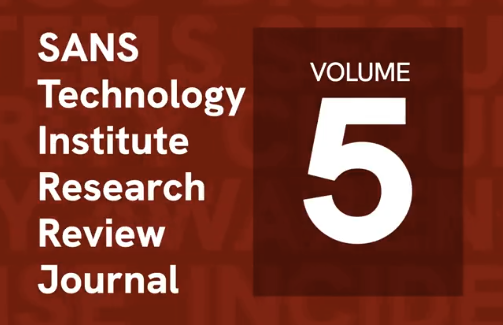Handler on Duty: Johannes Ullrich
Threat Level: green
Podcast Detail
SANS Internet Stormcast Feb 10th 2025: Podcast Anniversary; SSL 2.0; Exposed Deepseek Installs; Crypto Scam costs
If you are not able to play the podcast using the player below: Use this direct link to the audio file: https://traffic.libsyn.com/securitypodcast/9316.mp3
My Next Class
| Application Security: Securing Web Apps, APIs, and Microservices | Dallas | Dec 1st - Dec 6th 2025 |
| Network Monitoring and Threat Detection In-Depth | Online | Central European Time | Dec 15th - Dec 20th 2025 |
SSL 2.0 Turns 30 This Sunday
SSL was created in February 1995. However, back in 2005, only a year later, SSL 3.0 was released, and as of 2011, SSL 2.0 was deprecated, and support was removed from many crypto libraries. However, over 400k hosts are still exposed via SSL 2.0.
https://isc.sans.edu/diary/SSL%202.0%20turns%2030%20this%20Sunday...%20Perhaps%20the%20time%20has%20come%20to%20let%20it%20die%3F/31664
Deepseek News
Many articles cover various security shortcomings in the Chinese Deepseek AI model. Remember that some of these issues are not unique to Deepseek.
https://www.upguard.com/blog/deepseek-adoption
https://www.reversinglabs.com/blog/rl-identifies-malware-ml-model-hosted-on-hugging-face
https://www.wiz.io/blog/wiz-research-uncovers-exposed-deepseek-database-leak
https://www.nowsecure.com/blog/2025/02/06/nowsecure-uncovers-multiple-security-and-privacy-flaws-in-deepseek-ios-mobile-app/
Crypto Wallet Scam Not For Free
Didier looked closer at the recent dual signature crypto scams. These wallets are not free; attackers must spend money to set them up.
https://isc.sans.edu/diary/Crypto+Wallet+Scam+Not+For+Free/31666
Discussion
New Discussions closed for all Podcasts older than two(2) weeks
Please send your comments to our Contact Form
| Application Security: Securing Web Apps, APIs, and Microservices | Dallas | Dec 1st - Dec 6th 2025 |
| Network Monitoring and Threat Detection In-Depth | Online | Central European Time | Dec 15th - Dec 20th 2025 |
| Application Security: Securing Web Apps, APIs, and Microservices | Orlando | Mar 29th - Apr 3rd 2026 |
| Network Monitoring and Threat Detection In-Depth | Amsterdam | Apr 20th - Apr 25th 2026 |
| Application Security: Securing Web Apps, APIs, and Microservices | San Diego | May 11th - May 16th 2026 |
| Network Monitoring and Threat Detection In-Depth | Online | Arabian Standard Time | Jun 20th - Jun 25th 2026 |
| Network Monitoring and Threat Detection In-Depth | Riyadh | Jun 20th - Jun 25th 2026 |
| Application Security: Securing Web Apps, APIs, and Microservices | Washington | Jul 13th - Jul 18th 2026 |
Podcast Transcript
Hello and welcome to the Monday, February 10th, 2025 edition of the SANS Internet Storm Center's Stormcast. My name is Johannes Ullrich and today I'm recording from Jacksonville, Florida. Today as I'm recording this, it's also the 16th anniversary of this podcast. Started all February 9th, 2005. Didn't actually realize it's already that long running. Hope you'll enjoy it. Actually, thanks for some of the feedback that I've gotten based on my request on Friday. But well, it's not just the podcast that's having its birthday today. So does SSL version 2. And Jan on Friday took a closer look at how many SSL version 2 servers are still connected to the Internet. The absolute number may surprise people. It's 423 ,000 IP addresses according to Shodan. Well, however, it is really only a very miniscule percentage of all the HGP servers exposed to the Internet in total. So I think this 400,000 number sounds a bit more scary than it actually is. However, one thing that Jan points out is if you are finding a web server that still supports SSL version 2 in your environment. We're talking about SSL version 2, not SSL version 3. Chances are that this web server is overall running very out of date software. The protocol SSL version 3 started to be deprecated 14 years ago in 2011. So that essentially means that this particular device, this particular software has not really received any major updates for at least a decade. With that in mind, if you do find any of these devices, let me actually know what you find. I have to take a closer look at the Shodan data. I suspect a lot of things like webcams and such that are probably compromised already anyway or other sort of IoT style devices. And as so often, probably they're just waiting for the patch via Power Search. And yes, we still have to talk about DeepSeek. There's still a lot of DeepSeek news that has come up in the last few days. Now, before I dive into some of the issues here, I want to pre -phrase this a little bit in that these issues are affecting a lot of AI models. In particular, if they're installed in a hurry by hobbyists or pretty much without sufficient controls around these models. So with that, just a couple of the issues here. Number one, that apparently there are several thousand of DeepSeek instances that are exposed to the internet via OLAMA. OLAMA is a framework that can be used to easily run these kind of AI models. Basically provide an easy-to-use GUI for it. You can do the same with open AI models and such. So this is not something that's specific to DeepSeek and probably should not be done without specific controls around it for any model like this. Also, there are still a lot of analysis of the model itself and what features it may have when it comes to, for example, censorship and the like. Well, most models have some kind of parameters around what answers they will or will not provide. Of course, that often depends on what the model is being built for. We have on the one end some of the models, specifically, for example, designed for creating malware that don't have a lot of controls around it. With the DeepSeek model, of course, a lot of the controls are based on some of the political constraint around it coming from China. The last thing is also that the model is, of course, reporting home and also sending data unencrypted. Again, this is not that terribly unusual if you are using a web application in order to interact with a model. That web application usually does extensive logging. It often has a lot of JavaScript that will, for example, collect keystrokes in order to interact with the model's APIs. With that being said, well, it comes back down to a supply chain issue. As always, you have to trust your supply chain. So if you don't trust the entity the model comes from, you definitely shouldn't use it. There's also been some new work with HackingFace, for example, that there are a lot of models in HackingFace that are either just vulnerable or outright include things like backdoors or malicious content. And there's always a very fine line between vulnerability and the backdoor. We always have talked about backdoors if it's an official kind of support password or a password that was sort of added without telling the user about it. But sometimes the real backdoors aren't really that easy to spot. They're really just built as an authentication bypass that could plausibly be attributed to just bad coding versus actual malicious intent. And then a quick follow-up to the dual signature crypto wallet issue that I talked about last week. Well, did he now actually try to set up a wallet like this? It turns out you actually have to pay $23 to the drone network in order to configure a wallet like that. That sort of supports these dual signatures. Also, if you check out the podcast episode on YouTube, just by using the respective keywords, it attracted some additional spam, scam comments to that particular YouTube video. I left them up on purpose just to show basically what's coming in there. Doubt anybody will fall for it given that I'm talking in that episode about just that scam. Not sure if YouTube will eventually remove them. I'll only sort of try to keep sort of one of each type alive, not too many of them. Well, that's it for today. Thanks for listening and talk to you again tomorrow. Bye.











